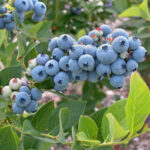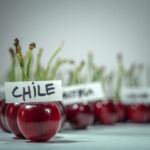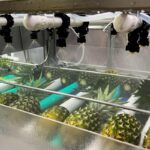A guide to growing spinach in the garden

The content of this article was written by Dan Drost, a Vegetable Specialist at Utah State University - Yard and Garden Extension
Summary
Spinach is a cool-season vegetable that prefers sunny locations and fertile, well-drained soil. Plant seeds ½ inch deep, 2-3 weeks before the last frost in the spring. Thin seedlings or transplant spinach to 3 inches apart in the row with rows 12 inches apart. Spinach tastes best when plants grow rapidly and mature before the heat of summer. Avoid water or fertilizer stress during growth. Control insects and diseases throughout the year. Harvest spinach when the leaves reach full size.
Recommended Varieties
Spinach comes in a variety of leaf types and textures. Planting a range of different types makes salads more interesting. There are many good varieties for sale in local gardening outlets and through seed catalogs. Most grow well in Utah. Varieties suited to local conditions include Bloomsdale, Melody, Teton, and Olympia.
How to Grow
Soil
Spinach prefers fertile, well-drained soils rich in organic matter for best growth. Most soils in Utah are well suited for spinach production.
Soil Preparation
Before planting, determine fertilizer needs with a soil test and then follow the recommendations given with the test report. If fertilizer applications are warranted, work the fertilizer into the top 6 inches of soil. If you fertilize with compost, apply no more than 1 inch of well-composted organic matter per 100 square feet of garden area.
Plants
Spinach can be grown from seed or transplants. Spinach seed can be sown after soils reach 40 degrees F. Seeds germinate best at 55-65 degrees F and require 7-10 days to emerge. Temperatures above 80°F reduce seed germination. Seeds should be planted ½ inch deep. Thin stands when plants have 3-4 true leaves. Plants removed at thinning can be transplanted to adjacent areas if some roots are maintained. Thinned plants can also be eaten. Transplants provide an earlier harvest. Transplants should have 4-6 mature leaves and a well-developed root system before planting out. Generally 5-6 weeks are required to grow transplants to this size.
Planting and Spacing
Seeded or transplanted spinach should be spaced 3 inches between plants in the row with rows 12 inches apart. Dense plantings will reduce weed pressure.
Spinach grows best when temperatures do not exceed 75°F. Temperatures down to 32°F do not seriously damage young plants. Transplants should be planted near the last frost-free date for the growing area. Seeded spinach may be planted 3-4 weeks earlier.
High summer temperatures reduce growth, decrease quality, and cause the plants to flower and the leaves to develop bitter or off-flavors. For fall spinach, select early maturing cultivars and plant 50-75 days before the anticipated maturity date.
The maturity date should be about 1-2 weeks after the anticipated first fall frost for your growing area. Plants can be left in the garden after light frosts. Spinach will easily over-winter for an early spring crop if the plant has 4-5 true leaves formed late in the year. When over-wintering spinach, mulch the plants heavily and remove the mulch after the snow melts in the spring.
Water
Water spinach regularly supplying 1-2 inches per week. Water requirements depend on soil type and temperatures. Mulch around the plant also helps conserve soil moisture and reduce weed growth. Moisture fluctuations will cause leaves to become tough, slow leaf development, and contribute to off-flavors.
Fertilization
Apply ¼ cup per 10 foot of row of a nitrogen-based fertilizer (21-0-0) 4 weeks after transplanting or at thinning to encourage rapid plant growth. Place the fertilizer to the side of the plants and irrigate it into the soil.
Mulches and Row Covers
Use fabric covers to protect seedlings and transplants from frost. Organic mulches help cool the soil and reduce water stress. Organic mulches such as grass clippings, straw, and shredded newspapers also help control weeds.
Problems
Weeds
Spinach does not compete well with weeds. Weed control is particularly important during establishment. Closely spaced plants will help control weeds. Cultivate shallowly and avoid root pruning to ensure uninterrupted growth.
Insects and Diseases
Most spinach is fast growing and is not susceptible to many production problems. Rotating locations from year to year helps control most diseases.
| Insects | Identification | Control |
|---|---|---|
| Aphids | Green or black soft-bodied insects that feed on underside of leaves. Leaves become crinkled and curled. | Use insecticidal soaps, appropriate insecticides, or strong water stream to dislodge insects. |
| Slugs | Soft-bodied or shelled mollusks that chew holes in leaves. | Control with appropriate pesticides or traps. Avoid moist conditions that favor slugs. |
| Flea Beetles | Small black beetle that feed on seedlings. Adults chew tiny holes in cotyledons and leaves. Beetles can reduce plant stands or may kill seedlings. | Control beetles with appropriate insecticides at seeding or after seedlings have emerged from the soil. Use floating row covers to exclude beetles from plants. |
Harvest and Storage
Individual spinach leaves may be picked any time before the flower stalk forms. Older leaves are often stripped off the plants first allowing the young leaves to continue to grow. Provided the growing point is not damaged, all leaves can be cut off to within 2 inches of the soil. Spinach can be stored for 1-2 weeks at 32°F and 95% relative humidity.
Productivity
A 10-foot row at 3 inches apart with 12 inches between rows will produce 4-6 pounds of spinach.
Nutrition
Spinach is low in calories and has no fat or cholesterol. Spinach is a very good source of dietary fiber, vitamins A, B6, C, folate, calcium, and iron.
Frequently Asked Questions
How do you keep spinach from developing a bitter flavor? Spinach grown at temperatures above 75 degrees F contributes to bitter flavor.
When is the best time to plant spinach? The best times to plant spinach is as a spring or fall crop. Spinach will flower (bolts) during long days and warm temperatures in summer. Varieties that are "long standing" or slow bolting are better adapted for late spring plantings.














































